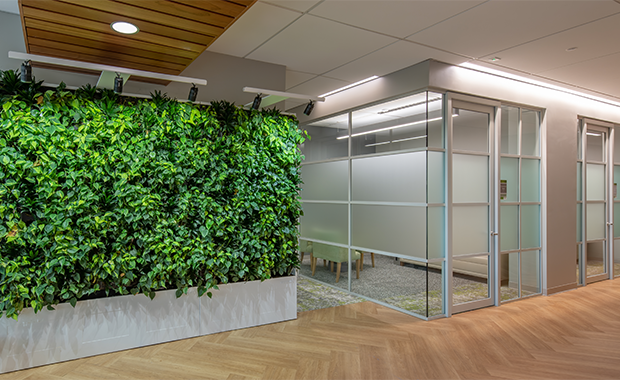Many designs ensure that specific patient groups feel welcome. The researchers working on this project are no different. The data and insights uncovered are helping patients with mild cognitive impairment (MCI).
Why Research for Mild Cognitive Impairment Patients
This research is important because an average of 15% of the population over the age of 60 is said to have mild cognitive impairment (MCI). MCI patients often have difficulty making plans, focusing attention, remembering instructions, interacting with others, and being independent at home. It’s important that these considerations are taken into account when designing healthcare spaces that will serve adults over age 60.
Building the Cognitive Empowerment Center
To better understand what was needed, researchers began by reviewing the literature on assisted living facilities for people with dementia and case studies on adult daycare facilities. Then they adjusted needs based on those with MCI. From there, they set a series of design goals and created conceptual spaces to implement different design techniques.
The process resulted in a series of design goals, including:
- providing spaces to learn how to autonomously perform everyday tasks at home (e.g., cooking)
- fostering social interaction among members and care partners, as well as engagement with the community
- maximizing safety and spatial flexibility
- supporting environmental exploration
- and promoting well-being through contact with nature, physical activity, and cognitive stimulation while avoiding information overload.
Design strategies for MCI
The center’s program consists of four cores, which are interdisciplinary teams responsible for planning and implementing research and interventions.
Build Environment Core
The Built Environment Core is responsible for planning and designing the CEC flexibly, safely, and engagingly. To support the CEC’s research and innovation processes, most spaces at the CEC are adaptable and outfitted with technologies. These include tunable lighting, controllable zone-based sound systems, video cameras, and wearable tags, which can be used to allow testing of changes made in the built environment. For example, tunable lighting can be used to study the effect of distinct light conditions on the alertness of people living with MCI and the potential of sound masking to reduce cognitive load. (Source)
Therapeutic Core
The Therapeutic Core is focused on enhancing the physical, cognitive, and emotional well-being of the program members and their care partners. The CEC has several spaces dedicated to therapeutic activities, including conversation rooms with acoustic insulation to preserve privacy and semitransparent walls to facilitate orientation; a library with semi-private areas with computer stations and space for cognitive training; group rooms with rearrangeable furniture and partitions to host different activities such as large group lectures or smaller programs; and a studio for physical activity. Finally, the kitchen has an open-plan area with safe appliances to host cooking classes, stimulating functional independence and facilitating social interaction. (Source)
Technology Core
The Technology Core supports non-intrusive interventions that can take place anywhere in the CEC. For example, a mobile app increases engagement and adherence to the program, and smart sensor technology is used to collect information while maintaining privacy. The center also includes spaces dedicated to technology, such as a tech bar near the reception area where staff can help members with their technology needs and an innovation theater that provides a controlled environment for testing new technologies with members. (Source)
Innovation Accelerator Team
Interacting with all the other cores, the Innovation Accelerator team is focused on creating opportunities for all stakeholders to engage in co-design and research to generate insights on improving the lives of those living with MCI. This includes an accelerator area designed with transparent glass walls and an adaptable furniture layout where people can participate in different group activities, such as data collection for research, presentations, and discussions on prototypes of built environments and, technological solutions, and think tanks. The transparent space ensures that research teams and members have continual exposure to each other, enhancing shared understanding and increasing engagement. (Source)
If this article is interesting, check out Designing For Alzheimer’s and Dementia Patients, Opioid Crisis Drives Emergency Department Reconfiguration, and Interview with Lyn Geboy.
Source: Tonetto, Leandro, et al. “Designing for Patients with Mild Cognitive Impairment – HCD Magazine.” HCD Magazine – Architecture & Interior Design Trends for Healthcare Facilities, 22 Feb. 2023, https://healthcaredesignmagazine.com/trends/designing-for-patients-with-mild-cognitive-impairment/.



